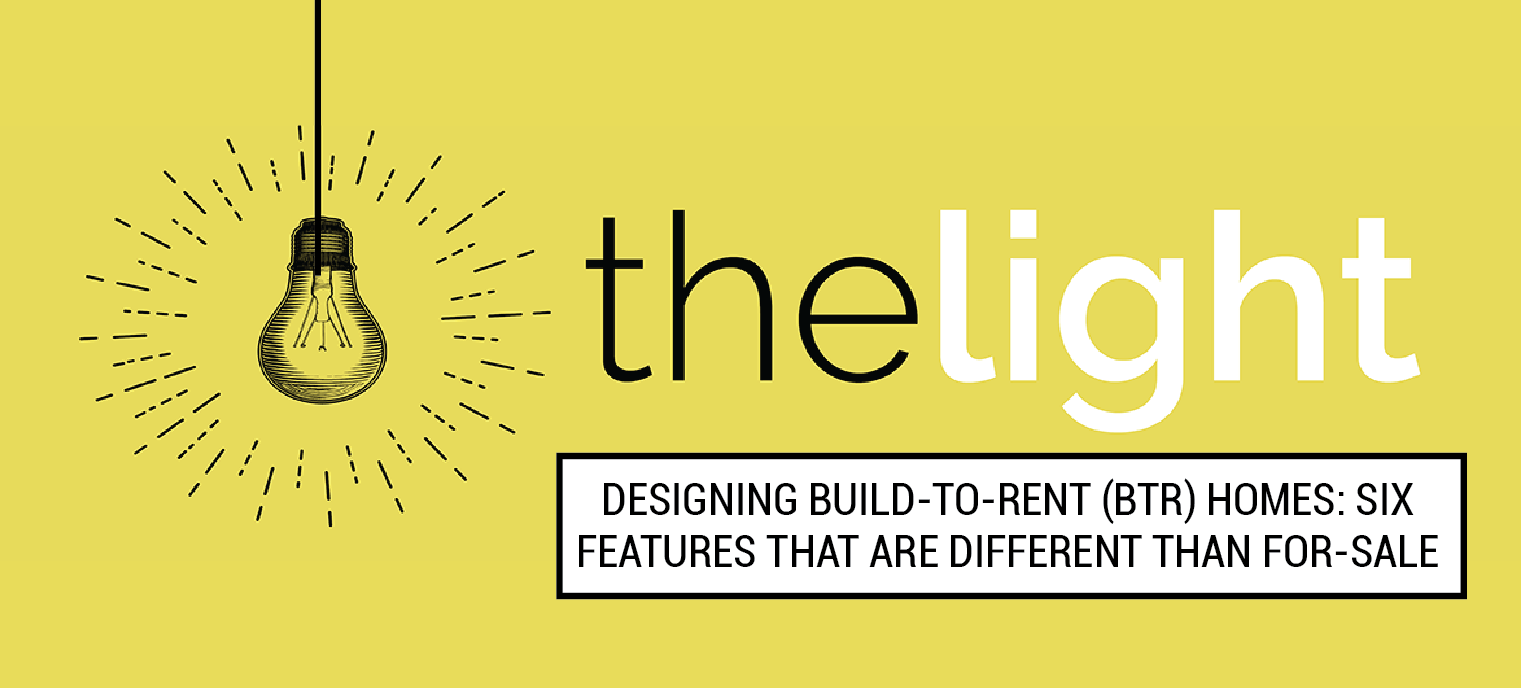Date
December 23, 2022
Category
Newsletters
Share
Regardless of home type or target renter in build-to-rent (BTR) homes, there are a few design strategies that differentiate them from for-sale homes. Consider the following six tenets:

- Amenities matter, but the kind varies by home type. In a community of detached houses, the garage and yard are considered amenities. In single-story residential communities, a heavy amenity package helps compete with Class A multifamily. Being located within a master plan helps as well.
- Make it easy to move in and out of. Widen the doorways and stairs. This makes it easier for people to move furniture in or out of the house and cuts down on scuffs on the walls. A well-defined TV wall is another one here. Otherwise, you have people punching holes in the wall every time they move in/out.
- Anything that needs to be serviced should be on the ground floor and easy to access. This allows the maintenance team to easily come in and fix things. Also, if for example the washer leaked, a laundry room on the ground floor minimizes water damage.
- Smart tech is a key service aid. While smart locks and Ring doorbells are nice to have, focus on technology that helps monitor the mechanical parts of the home without going inside the house. Flo by Moen is a great example of thoughtful smart tech for BTR. Community operators can tell if there is a leak in a home without having the homeowner need to notify them.
- Focus material selections to be highly functional. Keep materials and finishes easy to clean and durable so they do not have to be replaced as often. According to a recent New Home Trends Institute consumer survey*, single-family renters value the ability to easily clean flooring followed by durability. Renters want flooring, counters and cabinets that are easy to keep clean and take care of (to keep their security deposit). Developers want durability in floors and counters, so they do not have to replace them as often between residents.
- Standardize window and door sizes. Not every window needs to be the same size, but limit the window selections in each community to a select few. This standardization saves money during the original construction process since the builder can buy in bulk and it simplifies the process for the installers. It also standardizes the sizes of window blinds that need to be on hand. While windows do not often need to be replaced, blinds are another story.
While BTR is a hot topic, we find that great design is rarely discussed. Each year we gather some of the industry’s best minds to discuss BTR design and trends. To learn more about the New Home Trends Institute’s BTR council, please reach out here.


